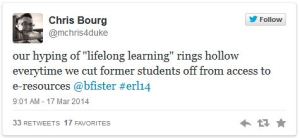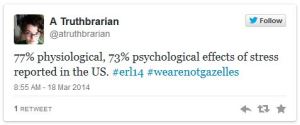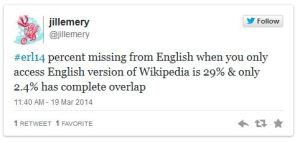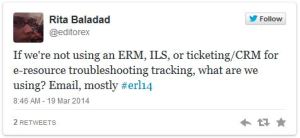Yesterday I attended a presentation by strengths specialist and leadership consultant, Sondra Cave, where she addressed applying strengths in times of change. Obviously, with any organizational change, there are new assignments, roles, and relationships to figure out, and understanding the strengths of your people can be very valuable. Knowing and working in your areas of strengths has been proven to result in greater engagement in the work, fewer mistakes, and (while not necessarily applicable to my environment) greater profits (1).
 After the structure of a big organizational change is rolled out, and questions of who and where have settled down, the focus shifts to the work to be done. The decisions in this phase seem to begin kind of haphazardly, in a thumb in the dyke (2) kind of way. This is especially true for the folks “running the trains” as they say. But, when those decisions begin with conversations, and those conversations have a bit more thought behind them, people start asking about the skills (or even better, the strengths) needed to get this work done.
After the structure of a big organizational change is rolled out, and questions of who and where have settled down, the focus shifts to the work to be done. The decisions in this phase seem to begin kind of haphazardly, in a thumb in the dyke (2) kind of way. This is especially true for the folks “running the trains” as they say. But, when those decisions begin with conversations, and those conversations have a bit more thought behind them, people start asking about the skills (or even better, the strengths) needed to get this work done.
I’d like to take a closer look at a skill that often comes up in my line of work: “attention to detail“. Anyone?
Well, if you plug that phrase into the top job finder sites, this skill is desired among 25,000+ advertised jobs, anywhere from accountant to electromechanical assembly technician. You might glean a little more context from the job title as to what details you might be attending. But even with the context of the job title, it seems we might need to be more specific — more attentive to the details of the “attention to detail” skill. Ba-dump-bump.
In my experience, librarians mostly mean attention to text (or numbers) details. They will sometimes call this having “eagle eyes”. What they mean is that they want you to be able to catch what the average Joe would miss, and thereby avoiding unintentional email miscommunication, a mislabeled book getting lost in the stacks, miscalculating expenses, buying a book we already own, or overlooking and agreeing to an egregious term in a license.
Confession: I am pretty bad at some of the traditional kind of detail my fellow librarians value. I often send emails (and publish posts) with typos and grammatical errors. Numbers alone actually jumble me up; I am not quick to calculate formulas or see how figures come out the way they do — at least not without struggle, trial, and error. But I’m not willing to admit that I lack attention to detail. And this, in a nutshell, is stubbornness the strengths concept Don Clifton started by asking:
What would happen if we actually studied what is right with people?
What I do have is a great attention to strategic detail. I can tell how something is going to work or not work in ways you might have not thought of. I am great at analyzing the numbers for which the details have already been attended, and can come up with various scenarios for taking action. I can also analyze the text-meaning of a license to know what wording and phrases might cause problems, or find strategies around problematic clauses. I am also very attentive to the details of people and their individual strengths. I’m not always empathetic. I don’t always openly relate well to people, or woo them. But I attentively listen, watch, and learn, and then find ways to help people succeed.
These are my top five strengths, although in order they are: Learner, Activator, Strategic, Analytical, Individualization. Just 5 of the 34 unique, strengths-based ways (3)* people may attend to details. I believe from experience that strengths offers a great approach to getting specific in the details of the work to be done and to getting a positive end result. Sondra Cave emphasized that there are many ways to get there, but the point is that we get there. By focusing our strengths toward the end in mind in this way, we get there faster and with greater…well, strength.
Sondra also emphasized the responsibility we have to use our strengths from a position of health, and not as label, or an excuse to do or not do certain things. One way this happens is by using your strengths to manage weaknesses. For example, I certainly use my analytical strength in my number-details weakness, and I often use my individualization and learner to manage my introvertedness — although, this is not necessarily a weakness (4)!
Point is, once you find out how you are using your strengths in the details of your current work you will be able to see how you might use those same strengths in thousands of other work and details, and how to use them to help you in less strong areas. This is how new teams are quickly formed, how new responsibilities are taken up, and how change becomes opportunity.
—————————————–
(1) Buckingham & Coffman (1999). First Break All the Rules. New York : Simon & Schuster.
(2) Hans Brinker, or The Silver Skates. (n.d.) In Wikipedia. Retrieved May 23, 2013, from http://en.wikipedia.org/wiki/Hans_Brinker,_or_The_Silver_Skates
(3) Gallup, Inc. (2010) StrengthsQuest. “All 34 Themes Full Description”. Retrieved May 23, 2013 from http://www.strengthsquest.com/content/143324/themes-full-description.aspx *While there are 34 Strengths themes, the various combinations of top 5 results and how they work together differntly, mean there are even more unique ways to approach tasks and relate to others.
(4) Cain (2012). Quiet: The Power of Introverts in a World That Can’t Stop Talking. New York: Crown Publishing Group, a division of Random House.




